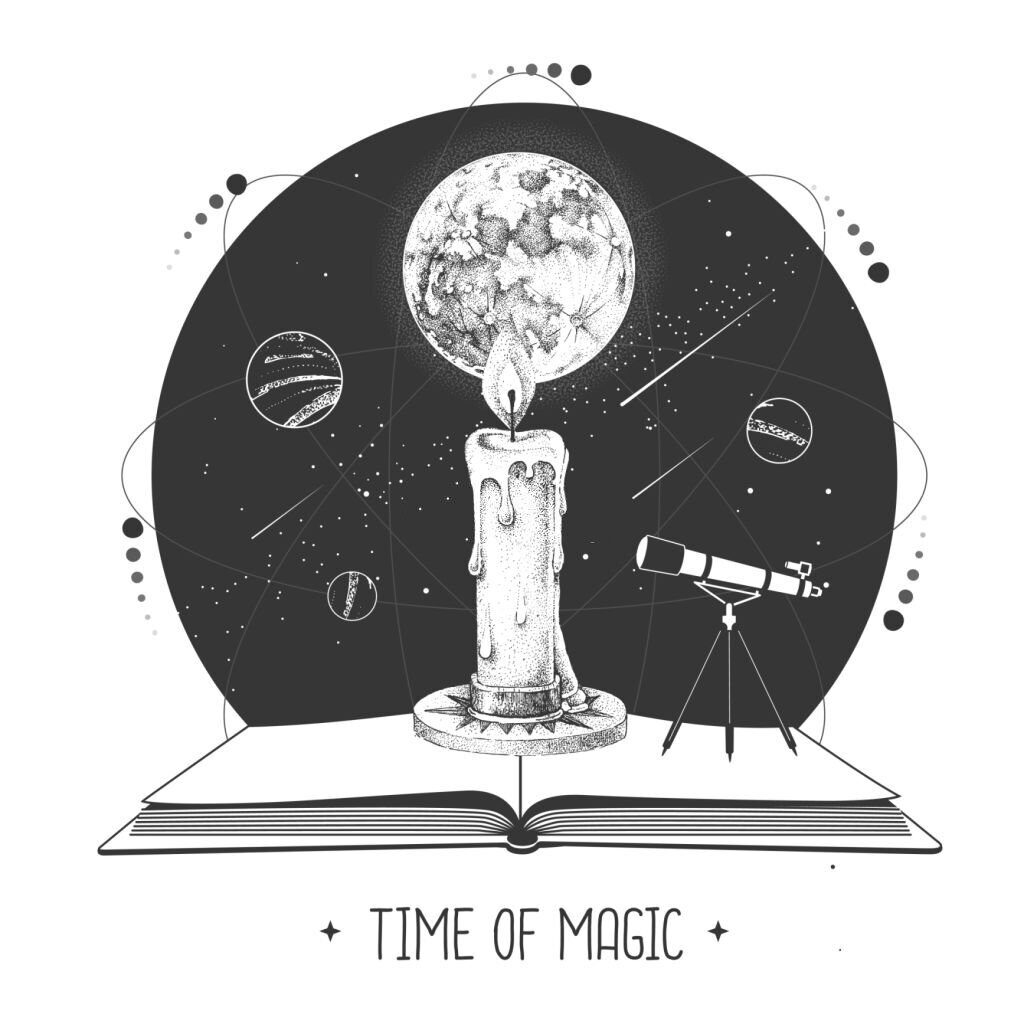
Table of Contents
Vedic Astrology Introduction.
Vedic astrology, also known as Jyotish, is an ancient system of astrology that originated in India. The term “Vedic” comes from the Vedas, which are a collection of sacred texts in Hinduism that date back to around 1500 BCE. Vedic astrology is based on the idea that the positions of the stars and planets at the time of a person’s birth can influence their life and personality.
One of the main differences between Vedic astrology and Western astrology is that Vedic astrology uses the sidereal zodiac, while Western astrology uses the tropical zodiac. The sidereal zodiac is based on the actual positions of the stars in the sky, while the tropical zodiac is based on the position of the sun relative to the earth’s orbit.
In Vedic astrology, the birth chart, or horoscope, is the most important tool used to understand a person’s life and destiny. The birth chart is calculated based on the person’s date, time, and place of birth. It consists of 12 houses, each representing a different area of life, such as career, relationships, and health.
The planets In Astrology.
The planets and signs of the zodiac are also important in Vedic astrology. Each planet is associated with certain qualities and energies, and each sign of the zodiac has its own unique characteristics. For example, the planet Venus is associated with love, beauty, and harmony, while the sign of Aries is associated with energy, assertiveness, and independence.
One of the key principles of Vedic astrology is that the planets are constantly moving and changing positions in the sky, which can have a profound impact on our lives. For example, when the planet Jupiter is in a certain position in the sky, it may bring good luck and prosperity, while when it is in another position, it may bring challenges and obstacles.
Name of Planets In Vedic.
In Vedic astrology, there are nine planets, also known as grahas, that are considered to have an influence on human life. The names of these planets in English are:
Sun
Moon (Chandra)
Mars
Mercury
Jupiter (Guru or Brihaspati)
Venus (Shukra)
Saturn
Rahu (North Lunar Node or Dragon’s Head)
Ketu (South Lunar Node or Dragon’s Tail)
Each of these planets is believed to have specific energies and influences that can affect different areas of life, such as career, relationships, health, and spirituality. The positions and movements of these planets in the sky at the time of a person’s birth are used to calculate their birth chart, or horoscope, which is used to gain insight into their life path and potential challenges and opportunities.
Another important aspect of Vedic astrology is the concept of karma. According to Vedic astrology, our past actions, both in this life and in previous lives, can influence our present and future. Our birth chart is seen as a reflection of our karma, and it can provide insight into the lessons we need to learn and the challenges we may face in this lifetime.
Overall, Vedic astrology offers a unique perspective on the role of the stars and planets in our lives. By understanding the energies and influences of the planets and signs, we can gain insight into our strengths, weaknesses, and life path. While Vedic astrology is not a replacement for personal responsibility and free will, it can be a powerful tool for self-discovery and personal growth.
what details required for making vedic astrology reading.
To make a Vedic astrology reading, an astrologer typically requires the following details:
Date of Birth: The exact date of birth is needed to determine the positions of the planets at the time of birth.
Time of birth: The precise time of birth is crucial for calculating the exact positions of the planets and the ascendant or rising sign, which plays a significant role in the interpretation of the birth chart.
Place of birth: The place of birth is necessary to calculate the exact positions of the planets and the ascendant based on the longitude and latitude of the location.
Once an astrologer has these details, he can create a birth chart, or horoscope, for the individual. The birth chart is a map of the positions of the planets and houses at the time of birth and is used to gain insight into the individual’s personality, strengths, weaknesses, and potential challenges and opportunities.
In addition to the basic details of date, time, and place of birth, an astrologer may also ask for information about the individual’s current life circumstances, goals, and challenges. This information can help the astrologer provide more personalized and relevant insights and guidance.